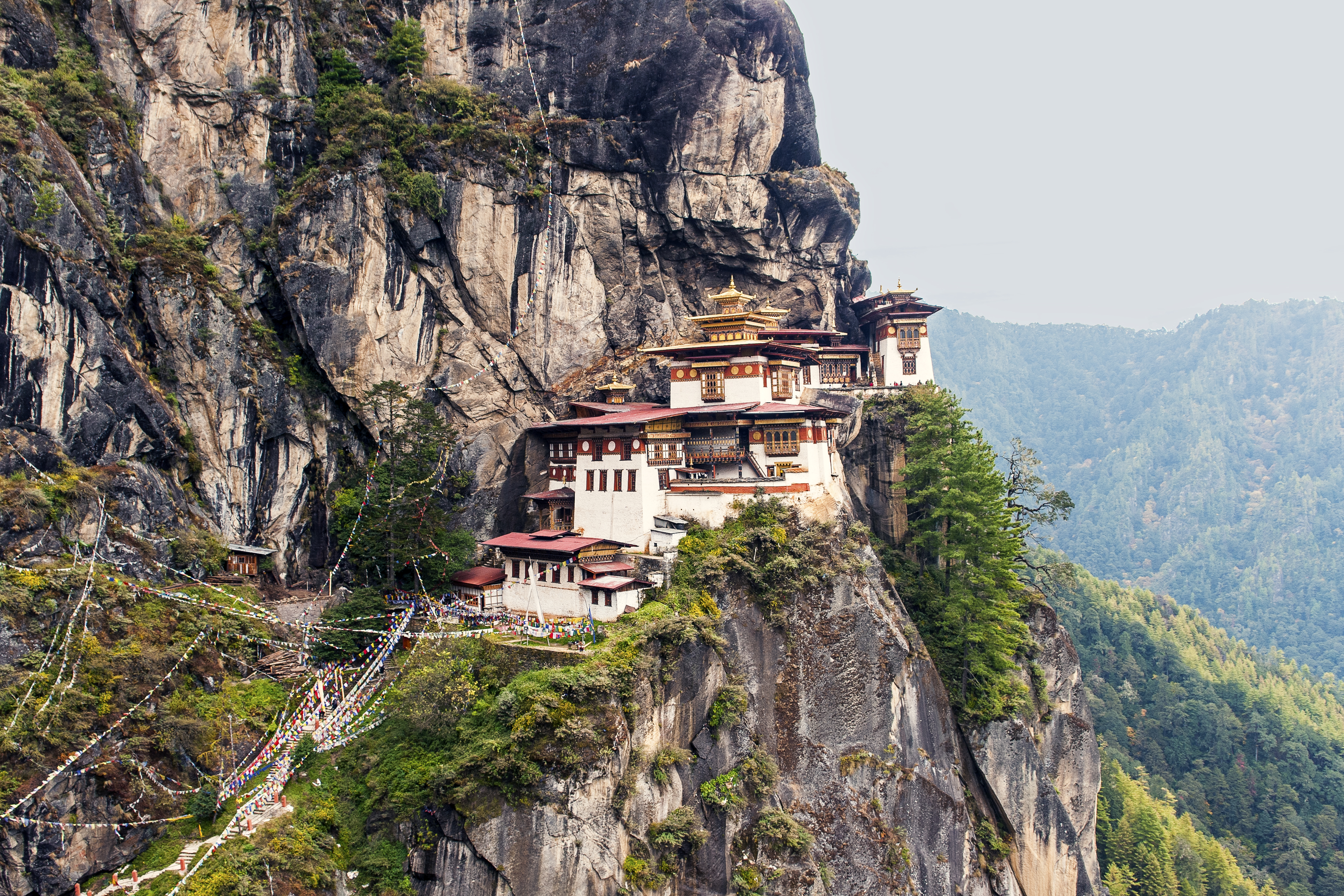We fully agree with Trinity College professor Shane O’Mara’s observation of the remarkable benefits of walking: “Walking improves our moods, our clarity of thought, our creativity, as well as our humanity and connectedness to our social and natural worlds. Walk we must and walk we should!” Long walks are good for conversations and work as a great digestif. The best way to get the most out of your change of scenery, is by leaving the tracking gadgets behind and sharing a friendly greeting with fellow hikers along the way.
Please enjoy exploring some of our favorite hikes in Bhutan below.

Thimphu to Punakha
This relatively easy hike between Thimphu and Punakha, takes approximately 3-4 hours round trip and takes you past the Buddhist shrine at Dochula Pass (10,000 ft) to Lungchutse Monastery. The path is used primarily by horses, cattle and yaks. If here during spring, you will see blooming rhododendron, juniper, birch and hemlock. The reward when reaching the monastery is panoramic views north of Bhutan’s major peaks 22-24,000 feet in elevation.

Phobjikha Valley: Gangtey Nature Trail
A short and easy trek, mostly down hill, taking approximately 2 hours, starts atop a small hill at the 16th century Gangtey Goemba. As you hike down you will pass through meadows blooming with wildflowers. A must-do for nature and wildlife lovers, this trail is an excellent glimpse into the peace and quiet rural Bhutanese life.

Tiger’s Nest
Though moderately difficult, extremely worth it! As the walk to Tiger’s Nest is up a relatively steep grade, we suggest a slow walking pace, with several stations available to rest. We feel the walk down to be more treacherous, as you may easily slip if wet/damp conditions.
Though you may decide the option on site of hiring horses for the uphill journey to Tiger’s Nest, we recommend walking on the downhill part of the journey.
The monastery’s namesake, “Tiger’s Nest” comes from local folklore that Guru Rinpoche arrived here on the back of a tigress and meditated at this spot. The monastery has been recognized as a most sacred place and visited by Shubdrung Ngawang Namgyal in 1646. All Bhutanese visit here at least once in their lifetime. Though severely damaged by a fire in 1998, Taktshang has been painstakingly restored to its original luster.
Trans-Bhutan Trail

Trans-Bhutan Trail
You may choose to walk, run, or cycle your way along this 403km trail spanning from Ha in the west of Bhutan to Trashigang in the east. Officially reopened in September 2022 after four years of restoration, the Trans-Bhutan dates back to the 16th century, making the trek a historic walking museum. Along the route, you’ll encounter lush green slopes, winding mountains, thick pines, and cypress trees.
While the trail itself is short, the journey is long. Thus, tourists will require a mandatory guide, and cannot drive their own vehicles throughout. Additionally, Trans-Bhutan trail has a daily $200/person fee, which goes towards funding “transformative programs that preserve cultural traditions, protect heritage and environment.”

